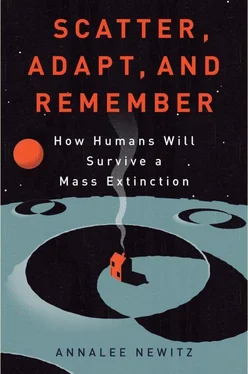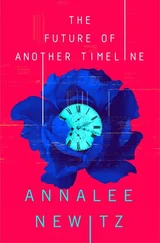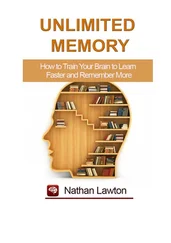16. Simon Armitage published a paper suggesting that H. sapiens emerged from Africa: Simon Armitage et al., “The Southern Route ‘Out of Africa’: Evidence for an Early Expansion of Modern Humans into Arabia,” Science 331 (2011): 453–56.
17. Svante Pääbo, who led the Neanderthal DNA sequencing project: Svante Pääbo et al., “A High-Coverage Genome Sequence from an Archaic Denisovan Individual,” Science 338 (October 2012): 222–26.
CHAPTER EIGHT: GREAT PLAGUES
1. wiped out over 60 percent of the population of the British Isles: Ole Jørgen Benedictow, The Black Death, 1346–1353: The Complete History (Woodbridge, U.K.: The Boydell Press, 2004).
2. The son of a wealthy wine merchant, Chaucer grew up: All the biographical details here come from Larry Benson, Robert Pratt, and F. N. Robinson, eds., The Riverside Chaucer (New York: Houghton Mifflin, 1986).
3. our own growing societies: We see the first stirrings of modern global culture during the late Middle Ages in Europe, when a growing middle class began laying the foundations for capitalism and global trade communities. As the sociologist Anthony Giddens would have it, this was the moment when the premodern era gave way to the modern. In a sense, today’s world is part of a narrative arc that began during Chaucer’s time. Before that era, urban or global cultures still tended to be exceptions.
Probably the closest historical analogy to the global culture that began stirring to life during Chaucer’s time would have been that of the Silk Road trade route that crossed from China into Europe for over a millennium. Still, the Silk Road culture was also a localized phenomenon, accessible only to nearby regions. Within a few hundred years of Chaucer’s time, the oceans became in essence an enormous Silk Road, uniting every continent in the world.
4. Jo Hays, a historian at Loyola University whose work focuses on pandemics: Personal interview, October 2011.
5. Likewise, the common people began questioning government authorities: Robert S. Gottfried, The Black Death: Natural and Human Disaster in Medieval Europe (New York: The Free Press, 1983), especially chapter 5.
6. After the Black Death, there was a rise: Frances and Joseph Gies, Women in the Middle Ages (New York: Harper Perennial, 1991).
7. SUNY Albany anthropologist Sharon DeWitte: Personal interview, November 30, 2011.
8. sequenced bacterial DNA: Kirsten I. Bos et al., “A Draft Genome of Yersinia pestis from Victims of the Black Death,” Nature 478 (October 27, 2011): 506–10.
9. New York University’s literary historian Ernest Gilman: Personal interview, February 15, 2012. See also Ernest Gilman, Plague Writing in Early Modern England (Chicago: University of Chicago Press, 2009).
10. In the late 1990s, Jared Diamond argued: Jared Diamond, Guns, Germs and Steel: The Fates of Human Societies (New York: W. W. Norton & Co., 1999, originally published in hardback in 1997). Diamond’s argument about the Americas is contained in a couple of chapters where he discusses the conquest of the massive Incan army by Pizarro’s small band of hooligans. Though very much aware of how plagues also played into this scenario, Diamond focuses in these chapters most heavily on how the Inca lacked steel and writing.
11. As Charles Mann explains in his book 1491: See Charles Mann, 1491: The Revelations of the Americas Before Columbus (New York: Vintage, 2005), especially part one, where Mann discusses how historians have arrived at the 90 percent number I mention a few paragraphs later.
12. only today finally being deciphered: One of the main places this decipherment is being done is at the Khipu Database Project at Harvard University. Scholars involved have identified several ways that the knots convey meaning, including size, orientation, color, and shape. They’ve already figured out the numbering system and are now moving on to the written language. You can learn more about the project here: http://khipukamayuq.fas.harvard.edu/.
13. Arizona State University forensic archaeologist Jane Buikstra: Personal interview, February 14, 2012.
14. Paul Kelton, of the University of Kansas: Personal interview, February 2012. See also Paul Kelton, Epidemics and Enslavement: Biological Catastrophe in the Native Southeast 1492–1715 (Lincoln and London: University of Nebraska Press, 2007).
15. David S. Jones, a Harvard historian and medical doctor, sums up the issues: David S. Jones, “Virgin Soils Revisited,” William and Mary Quarterly 60 (October 2003): 703–42.
16. Susan Kent explains in her recent book about the 1918–19 flu epidemic: Susan Kent, The Influenza Pandemic of 1918–1919 (Boston and New York: Bedford/St. Martins, 2013).
17. native cultures and peoples have survived throughout the Americas: Gerald Vizenor, Native Liberty: Natural Reason and Cultural Survivance (Lincoln and London: University of Nebraska Press, 2009).
CHAPTER NINE: THE HUNGRY GENERATIONS
1. Famines have been recorded in historical documents: Cormac Ó Gráda, Famine: A Short History (Princeton and Oxford: Princeton University Press, 2009).
2. Cormac Ó Gráda has spent most of his career: Personal interview, December 8, 2011.
3. This famine had its roots in politics: John O’Rourke, The History of the Great Irish Famine of 1847 (Dublin: James Duffy and Co., Ltd., 1902). This is a fascinating account by a man who gathered together many first-person accounts of the famine, mostly from interviews he did with survivors in the late nineteenth century. He credits “the public press” as being one of the first groups to alert the world to the famine, and place it in a political context.
4. Amartya Sen first advanced this theory in the 1980s: Amartya Sen, Poverty and Famines: An Essay on Entitlement and Deprivation (Oxford: Oxford University Press, 1983).
5. Evan Fraser, a geographer at the University of Guelph: Personal interview, February 16, 2012. See also Evan Fraser, “Social Vulnerability and Ecological Fragility: Building Bridges Between Social and Natural Sciences Using the Irish Potato Famine as a Case Study,” Conservation Ecology 7 (2003): 9.
6. According to the weekly U.S. Drought Monitor: I’ve pulled these numbers from publicly available statistics on the summer 2012 Midwest drought, available from the U.S. National Climatic Data Center in its August 2012 State of the Climate drought report. This document is available online here: http://www.ncdc.noaa.gov/sotc/drought/#national-overview.
7. Newcastle University historian and demographer Violetta Hionidou: Personal interview, February 15, 2012. See also Violetta Hionidou, Famine and Death in Occupied Greece , 1941–1944 (Cambridge, U.K.: Cambridge University Press, 2006).
8. University of Hong Kong history professor Frank Dikötter: Frank Dikötter, Mao’s Great Famine: The History of China’s Most Devastating Catastrophe, 1958–1962 (New York: Walker and Company, 2011).
9. Intergovernmental Panel on Climate Change’s recent models: You can see these predictions in S. Solomon, D. Qin, M. Manning, Z. Chen, M. Marquis, K. B. Averyt, M. Tignor, and H. L. Miller, eds., Contribution of Working Group I to the Fourth Assessment Report of the Intergovernmental Panel on Climate Change, 2007 (Cambridge: Cambridge University Press, 2007). It is online at http://www.ipcc.ch/publications_and_data/ar4/wg1/en/spmsspm-projections-of.html.
10. “You get a famine if the price of food”: Personal correspondence, February 14, 2012.
CHAPTER TEN: SCATTER: FOOTPRINTS OF THE DIASPORA
Читать дальше






![Аннали Ньюиц - Автономность [litres]](/books/424681/annali-nyuic-avtonomnost-litres-thumb.webp)





